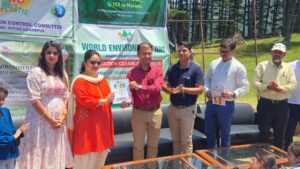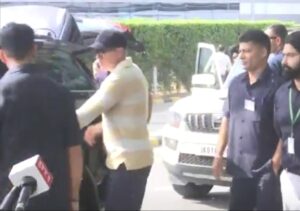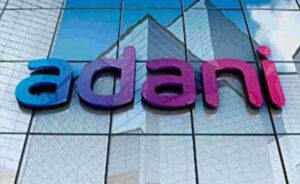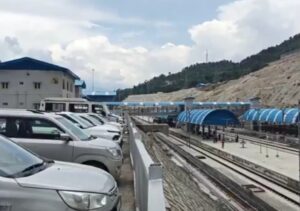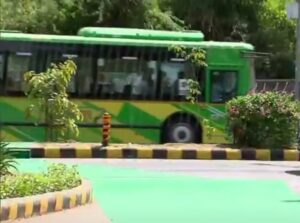Geography of India | Questions and Notes | QUIZ QUESTIONS | 2022 | QUIZ-2022 |
‘
Geography of India | Questions and Notes
Table of Contents
Factual Questions………………………………………..
Premium Questions………………………………………..
Interpretive Questions……………………………………
Notes…………………………………………………
—-Factual Questions—-
1) They form India’s north-eastern border, separating it from the rest of Asia.
Answer: True
2) The protection and climatic control they have provided has been a geographical quality that has assisted India’s position as a Great power. These mountains are recognised by biogeographers as the boundary between two of the earth’s great ecozones; the temperate Palearctic that covers most of Eurasia, and the tropical and subtropical Indomalaya ecozone that includes the Indian subcontinent and extend into South America and Indonesia.
Answer: False
Correct Sentence: These mountains are recognised by biogeographers as the boundary between two of the earth’s great ecozones; the temperate Palearctic that covers most of Eurasia, and the tropical and subtropical Indomalaya ecozone that includes the Indian subcontinent and extend into Southeast Asia and Indonesia.
3) Water bodies of India are Bangladeshi ocean, arabian sea, bay of bengal.
Answer: False
Correct Sentence: Water bodies of India are Indian ocean, arabian sea, bay of bengal.
4) Rainfall is precarious and erratic, ranging from below 120 _______ in the extreme west to 375 mm eastward.
Answer: mm
5) India is bounded on the southwest by the Arabian Sea and on the southeast by the Bay of Bengal.
Answer: True
6) The strip begins in Gujarat in the north and extends across the states of Maharashtra, Goa, _______ and Kerala.
Answer: Karnataka
7) The Chota Nagpur Plateau is a plateau in eastern India, which covers much of Jharkhand state as well as adjacent parts of Orissa, _______, and Chhattisgarh.
Answer: Bihar
A)Bihar
B)Maharashtra
C)Haryana
D)West Bengal
8) On the north, northeast, and northwest are the _______.
Answer: Himalayas
9) The numerous rivers that originate in the mountains provide water to the fertile _______ plains.
Answer: Indo-Gangetic
10) The highest peak is Mount Abu, rising to 1,722 m, lying near the southwestern extremity of the range, close to the border _______ Gujarat.
Answer: with
A)with
B)West Bengal
C)Rajasthan
D)Bihar
11) The Eastern and Western Ghats meet at the Nilgiri or Malay knot in _______ _______.
Answer: Tamil Nadu
12) The Deccan extend from the state of Jammu and Kashmir in the west to the state of Arunachal Pradesh in the east.
Answer: False
Correct Sentence: The Himalayas extend from the state of Jammu and Kashmir in the west to the state of Arunachal Pradesh in the east.
13) _______ constitutes the southern tip of the Indian peninsula, which narrows before ending in the Indian Ocean.
Answer: Kanyakumari
14) _______ in Rajasthan is situated in the heart of the Thar Desert.
Answer: Jaisalmer
15) The _______ _______ are large floodplains of the Indus and the Ganga- Brahmaputra river systems.
Answer: Indo-Gangetic plains
16) The Himalayas are the only mountain ranges to have snow-capped peaks.
Answer: True
17) It geographically separates northern India from southern India.
Answer: True
18) The Aravalli Range is the oldest mountain range in India, running from northeast to southwest across _______ in western India, extending approximately 500 km.
Answer: Rajasthan
A)Rajasthan
B)Jharkhand
C)Maharashtra
D)Uttarakhand
19) Most of the Thar Desert is situated in Rajasthan, covering 61% of its geographic area.
Answer: True
20) Most peaks in the _______ remain snowbound throughout the year.
Answer: Himalayas
21) The lack of rainfall is mainly due to the unique position of the desert with respect to the Aravalli range. The parallel nature of the range to the Arabian Sea arm also means that the desert does not receive much rainfall.
Answer: True
22) The fertile Indo-Gangetic plain occupies most of northern, central and eastern India, while the _______ _______ occupies most of southern India.
Answer: Deccan Plateau
23) Satellite image of the _______ region of southern India.
Answer: Deccan
24) Describe ‘Kanara Coast’.
Answer source: The northern region of Maharashtra and Goa is known as the Konkan Coast, the central region of Karnataka is known as the Kanara Coast and the southern coastline of Kerala is known as the Malabar Coast.
25) Describe ‘Eastern Ghats’.
Answer source: The Eastern Ghats are a discontinuous range of mountains, which have been eroded and cut through by the four major rivers of southern India, the Godavari, Mahanadi, Krishna, and Kaveri.
26) Extent of the Indo-Gangetic plain across South _______.
Answer: Asia
27) The _______ range runs across most of central India, covering a distance of 1,050 km.
Answer: Vindhya
28) India is bordered by Pakistan, the People’s Republic of China, Bangladesh, _______, Nepal, Bhutan and Afghanistan.
Answer: Myanmar
A)Myanmar
B)Sri Lanka
C)Cambodia
D)Malaysia
29) Spread over four _______ in India – Punjab, Haryana, Rajasthan, and Gujarat it covers an area of 208,110 km².
Answer: states
30) Crops grown on the _______ Plain are primarily rice and wheat, grown in rotation.
Answer: Indo-Gangetic
31) The Aravalli are one of the world’s youngest mountain ranges, and extend almost uninterrupted for a distance of 2,500 km , covering an area of 500,000 km² .
Answer: False
Correct Sentence: The Himalayas are one of the world’s youngest mountain ranges, and extend almost uninterrupted for a distance of 2,500 km , covering an area of 500,000 km² .
32) Describe ‘Himalayas’.
Answer source: The Himalayas are the only mountain ranges to have snow-capped peaks.
33) Map of the hilly regions in India.
Answer: True
34) Politically, Pakistan is divided into 28 states, six federally administered union territories and a national capital territory.
Answer: False
Correct Sentence: Politically, India is divided into 28 states, six federally administered union territories and a national capital territory.
35) The highest point in undisputed Indian territory is _______, at 8,598 m.
Answer: Kangchenjunga
36) The Aravalli Range is the eroded stub of an ancient folded mountain system that was once snow-capped. The range joins two of the ancient segments that make up the African craton, the Marwar segment to the northwest of the range, and the Bundelkhand segment to the southeast.
Answer: False
Correct Sentence: The range joins two of the ancient segments that make up the Indian craton, the Marwar segment to the northwest of the range, and the Bundelkhand segment to the southeast.
37) The Chota Nagpur Plateau is made up of three smaller plateaus, the _______, Hazaribagh, and Kodarma plateaus.
Answer: Ranchi
38) It extends for a distance of _______ _______ with many of its peaks rising above 1000 m.
Answer: 900 km
39) Describe ‘Thar Desert’.
Answer source: The Thar Desert is a hot desert that forms a significant portion of western India.
40) These states along with _______ _______, Uttaranchal, and Sikkim lie mostly in the Himalayan region.
Answer: Himachal Pradesh
41) Describe ‘Satpura Range’.
Answer source: The Satpura Range is a range of hills in central India.
42) India comprises most of the Indian subcontinent situated on the Indian _______, the northerly portion of the Indo-Australian Plate.
Answer: Plate
A)Plate
B)Aetherblade
C)Belt
D)Coat
43) The _______ _______ is a range of hills in central India.
Answer: Satpura Range
44) The Nilgiris are considered to be a part of the _______ _______.
Answer: Western Ghats
45) India measures 3,214 km from north to south and 2,933 km from east to west.
Answer: True
46) A great arc of mountains, composed of the Himalaya, _______, and Patkai ranges, define the Indian subcontinent.
Answer: Hindu Kush
A)Hindu Kush
B)Opium Poppies
C)Southern Provinces
D)Land Bridge
47) The _______ _______ _______ is a wide stretch of land lying between the Eastern Ghats and the Bay of Bengal.
Answer: Eastern Coastal Plain
48) The _______ _______ in the Cardamom Hills at 2,695 m in Kerala is the highest peak in the Western Ghats.
Answer: Anai Mudi
49) Describe ‘Aravalli Range’.
Answer source: The Aravalli Range is the oldest mountain range in India, running from northeast to southwest across Rajasthan in western India, extending approximately 500 km .
50) Describe ‘Chota Nagpur Plateau’.
Answer source: The Chota Nagpur Plateau is a plateau in eastern India, which covers much of Jharkhand state as well as adjacent parts of Orissa, Bihar, and Chhattisgarh.
51) The _______ are the only mountain ranges to have snow-capped peaks.
Answer: Himalayas
52) Politically, India is divided into 28 _______, six federally administered union territories and a national capital territory.
Answer: states
53) Water bodies of India are _______ _______, arabian sea, bay of bengal.
Answer: Indian ocean
54) The features of the _______ ranges are conical peaks, steep slopes and deep valleys.
Answer: Patkai
55) The Western Coastal Plain is a narrow strip of land sandwiched between the Western Ghats and the Arabian Sea.
Answer: True
56) The mountains on India’s eastern border with Myanmar are called as the Patkai or the _______.
Answer: Purvanchal
57) Much of the _______ is covered by thorn scrub forest scattered with small regions of deciduous broadleaf forest.
Answer: Deccan
58) The _______ belt is the world’s most extensive expanse of uninterrupted alluvium formed by the deposition of silt by the numerous rivers.
Answer: Indo-Gangetic
59) To the west of the country is the _______ _______, which consists of a mix of rocky and sandy desert.
Answer: Thar Desert
60) A view of India’s west coast at _______, near the border with Maharashtra.
Answer: Goa
61) The range joins two of the ancient segments that make up the Indian craton, the Marwar segment to the northwest of the range, and the Bundelkhand segment to the southeast. The present mm range is only a remnant of the gigantic system that existed in prehistoric times with several of its sum mits rising above the snow line and nourishing glaciers of stupendous magnitude which in turn fed many great rivers.
Answer: False
Correct Sentence: The present Aravalli range is only a remnant of the gigantic system that existed in prehistoric times with several of its sum mits rising above the snow line and nourishing glaciers of stupendous magnitude which in turn fed many great rivers.
62) Describe ‘Eastern Coastal Plain’.
Answer source: The Eastern Coastal Plain is a wide stretch of land lying between the Eastern Ghats and the Bay of Bengal.
63) Due to the low population density, the effect of the population on the environment is relatively less compared to the rest of India.
Answer: True
64) The _______ extend from the state of Jammu and Kashmir in the west to the state of Arunachal Pradesh in the east.
Answer: Himalayas
65) Satellite image of the Deccan region of southern India.
Answer: True
66) These mountains were formed by the ongoing tectonic collision of the _______ Plate with the Eurasian Plate which started some 50 million years ago.
Answer: Indian
A)Indian
B)Ethiopian
C)Asian
D)South African
67) The _______ ranges are not as rugged or tall as the Himalayas.
Answer: Patkai
68) The _______ plateau is a large triangular plateau, bounded by the Vindhyas to the north and flanked by the Eastern and Western Ghats.
Answer: Deccan
69) Besides the Great Indian peninsula, the Kathiawar Peninsula in Bihar is another large peninsula of India.
Answer: False
Correct Sentence: Besides the Great Indian peninsula, the Kathiawar Peninsula in Gujarat is another large peninsula of India.
70) _______ and the Maldives are island nations to the south of India.
Answer: Sri Lanka
A)Sri Lanka
B)Myanmar
C)Malaysia
D)India
71) Thar Desert. The Thar Desert is a hot desert that forms a significant portion of western India.
Answer: True
72) South Korea is divided into 29 states , six union territories and the National Capital Territory of Delhi.
Answer: False
Correct Sentence: India is divided into 29 states , six union territories and the National Capital Territory of Delhi.
73) States and territories of India. The state of Arunachal Pradesh is claimed by China but administered by India.
Answer: True
74) The Garo-Khasi range is in the Indian state of _______.
Answer: Meghalaya
75) The region receives both the Northeast and Southwest monsoon rains with its annual rainfall averaging between 1,000 The Thar Desert and 3,000 mm .
Answer: False
Correct Sentence: The region receives both the Northeast and Southwest monsoon rains with its annual rainfall averaging between 1,000 mm and 3,000 mm .
76) The lack of rainfall is mainly due to the unique position of the desert with respect to the Aravalli range.
Answer: True
77) Pakistan’s east and northeastern border consists of the high Himalayan range.
Answer: False
Correct Sentence: India’s east and northeastern border consists of the high Himalayan range.
78) The _______ covers a total area of 1.9 million km².
Answer: Deccan
79) The Shiwalik, or lower Himalaya, consists of smaller hills towards the Indian side.
Answer: True
80) The geography of _______ is extremely diverse, with landscape ranging from snow-capped mountain ranges to deserts, plains, hills and plateaus.
Answer: India
A)India
B)China
C)Sri Lanka
D)Bangladesh
81) The _______, or lower Himalaya, consists of smaller hills towards the Indian side.
Answer: Shiwalik
82) The northern mountains including the _______ and the northeast mountain ranges.
Answer: Himalayas
83) India is bounded in the southwest by the _______ and in the southeast by the Bay of Bengal.
Answer: Arabian Sea
A)Arabian Sea
B)Black Sea
C)Indian Ocean
D)Arctic Ocean
84) The area is characterised by extreme temperatures of above 28 ° C in summer to below freezing in winters.
Answer: False
Correct Sentence: The area is characterised by extreme temperatures of above 45 ° C in summer to below freezing in winters.
85) The Vindhya range runs across most of central Pakistan, covering a distance of 1,050 km .
Answer: False
Correct Sentence: The Vindhya range runs across most of central India, covering a distance of 1,050 km .
86) The _______ _______ _______ is a narrow strip of land sandwiched between the Western Ghats and the Arabian Sea.
Answer: Western Coastal Plain
87) The Shiwalik, or lower Himalaya, consists of smaller hills towards the Indian side. Many of India’s hill stations are located on this range.
Answer: True
88) The name Deccan comes from the Sanskrit word dakshina, which means “the south”.
Answer: True
89) The name Deccan comes from the Sanskrit word _______, which means “the south”.
Answer: dakshina
90) The total area of _______ _______ _______ is approximately 65,000 km².
Answer: Chota Nagpur Plateau
91) Describe ‘Western Coastal Plain’.
Answer source: The Western Coastal Plain is a narrow strip of land sandwiched between the Western Ghats and the Arabian Sea.
92) They also facilitate the monsoons that drive climate in India. The protection and climatic control they have provided has been a geographical quality that has assisted Malaysia’s position as a Great power.
Answer: False
Correct Sentence: The protection and climatic control they have provided has been a geographical quality that has assisted India’s position as a Great power.
93) India is divided into seven geographic regions.
Answer: True
94) Describe ‘Deccan Plateau’.
Answer source: The Deccan plateau is a large triangular plateau, bounded by the Vindhyas to the north and flanked by the Eastern and Western Ghats.
95) Deltas of many of China’s rivers form a major portion of the plains.
Answer: False
Correct Sentence: Deltas of many of India’s rivers form a major portion of these plains.
96) The Deccan plateau is a large triangular plateau, bounded by the Vindhyas to the north and flanked by the Eastern and Western Ghats.
Answer: True
97) Brunei lies to the north of the equator between 8 degree 4 minutes and 37 degree 6 minutes north latitude and 68 degrees 7 minutes and 97 degrees 25 minutes east longitude.
Answer: False
Correct Sentence: India lies to the north of the equator between 8 degree 4 minutes and 37 degree 6 minutes north latitude and 68 degrees 7 minutes and 97 degrees 25 minutes east longitude.
98) States and territories of Malaysia.
Answer: False
Correct Sentence: States and territories of India.
99) Map of the hilly regions in India. They also facilitate the monsoons that drive climate in India.
Answer: True
100) Some of the Himalayan peaks range over 7,000 m and the snow line ranges between 6,000 m in Brunei to around 3,000 m in Kashmir.
Answer: False
Correct Sentence: Some of the Himalayan peaks range over 7,000 m and the snow line ranges between 6,000 m in Sikkim to around 3,000 m in Kashmir.
101) The desert continues into Pakistan as the Cholistan Desert.
Answer: True
102) Who has the distinction of being the wettest place in the world?
Answer: Cherrapunji, which lies on the windward side of these hills
103) Spread over four states in India – Punjab, _______, Rajasthan, and Gujarat it covers an area of 208,110 km².
Answer: Haryana
A)Haryana
B)Maharashtra
C)Bihar
D)Karnataka
104) The lack of rainfall is mainly due to the unique position of the desert with respect to the _______ _______.
Answer: Aravalli range
105) The _______ _______ is the oldest mountain range in India, running from northeast to southwest across Rajasthan in western India, extending approximately 500 km.
Answer: Aravalli Range
106) The Andaman and _______ Islands in the Bay of Bengal and Lakshadweep in the Arabian Sea are parts of India.
Answer: Nicobar
107) The Central Highlands are composed of three main plateaus – the Malwa Plateau in the west, the Deccan Plateau in the south,; and the Chota Nagpur Plateau _______ Jharkhand towards the east.
Answer: in
A)in
B)Rajasthan
C)Bihar
D)West Bengal
108) The Anai Mudi in the Cardamom Hills at 2,695 m in _______ is the highest peak in the Western Ghats.
Answer: Kerala
A)Kerala
B)Hyderabad
C)Karnataka
D)West Bengal
109) The Vindhyas in central India.
Answer: True
110) India is divided into 29 _______, six union territories and the National Capital Territory of Delhi.
Answer: states
111) A great arc of mountains, composed of the Himalaya, Hindu Kush, and _______ ranges, define the Indian subcontinent.
Answer: Patkai
112) China has seven major mountain ranges having peaks of over 1,000 m .
Answer: False
Correct Sentence: India has seven major mountain ranges having peaks of over 1,000 m .
113) They form India’s north-eastern border, separating it from the rest of _______.
Answer: Asia
114) Much of the Deccan is covered by thorn scrub forest scattered with large regions of deciduous broadleaf forest.
Answer: False
Correct Sentence: Much of the Deccan is covered by thorn scrub forest scattered with small regions of deciduous broadleaf forest.
115) The highest point in India is disputed due to a territorial dispute with _______; according to India’s claim, the highest point is K2, at 8,611 m.
Answer: Pakistan
A)Pakistan
B)Sudan
C)Iran
D)Saudi Arabia
116) _______ have their own elected government, while Union Territories are governed by an administrator appointed by the union government.
Answer: States
117) National Capital Territory of Delhi. The state of _______ and Kashmir is claimed by India but disputed by Pakistan and China, who administer parts of the territory.
Answer: Jammu
A)Jammu
B)Assam
C)Punjab
D)Rajasthan
E)Kashmir
F)West Bengal
G)Maharashtra
H)Odisha
118) It extends for a distance of 900 km with many of its peaks rising above 1000 m . The Aravalli Range is the eroded stub of an ancient folded mountain system that was once snow-capped.
Answer: True
—-Premium Questions—-
119) What is the average elevation of the hills?
Answer: 300 m.
120) What is the satellite view of the Gangetic plains?
Answer: Satellite.
121) What is the climate range from the alpine to alpine?
Answer: Altitude.
—-Interpretive Questions—-
122) What are the two islands?
Answer: Sri Lanka and the Maldives
123) What country is the most diverse?
Answer: India
124) How many federal administered union territories are there?
Answer: six
125) What is the political divisions?
Answer: linguistic and ethnic boundaries
———Notes———-
India comprises most of the Indian subcontinent situated on the Indian Plate, the northerly portion of the Indo-Australian Plate. Most of India lies on a peninsula in southern Asia that protrudes into the Indian Ocean. The highest point in India is disputed due to a territorial dispute with Pakistan; according to India’s claim, the highest point (located in the disputed Kashmir territory) is K2, at 8,611 m (28,251 feet) Politically, India is divided into 28 states, six federally administered union territories and a national capital territory. States have their own elected government, while Union Territories are governed by an administrator appointed by the union government. India has seven major mountain ranges having peaks of over 1,000 m (3,300 feet) The Himalayas are one of the world’s youngest mountain ranges, and extend almost uninterrupted for a distance of 2,500 km (1,550 miles) They form India’s north-eastern border, separating it from the rest of Asia. Kangchenjunga, which lies in Sikkim, is the highest point in the country’s territory (undisputed) The Shiwalik, or lower Himalaya, consists of smaller hills towards the Indian side. The Patkai ranges are not as rugged or tall as the Himalayas. The Vindhya range runs across most of central India, covering a distance of 1,050 km (652 miles) They are believed to have been formed by the wastes created due to the weathering of the ancient Aravalli mountains. The Aravalli Range is the oldest mountain range in India, running from northeast to southwest across Rajasthan in western India. The highest peak is Mount Abu, rising to 1,722 m (5,653 feet), lying near the southwestern extremity of the range, close to the border with Gujarat. The Western Ghats or Sahyadri mountains run along the western edge of India’s Deccan Plateau. The Eastern Ghats are a discontinuous range of mountains, which have been eroded and cut through by the four major rivers of southern India, the Godavari, Mahanadi, Krishna, and Kaveri. The Indo-Gangetic belt is the world’s most extensive expanse of uninterrupted alluvium formed by the deposition of silt by the numerous rivers. The plains are flat and mostly treeless, making it conducive for irrigation through canals. The Thar Desert (also known as the Great Indian Desert) is a hot desert that forms a significant portion of western India. It covers an area of 208,110 km² (80,350 mile²) Spread over four states in India – Punjab, Haryana, Rajasthan, and Gujarat. The desert lies in the rain shadow area of the Bay of Bengal arm of the southwest monsoon. The Deccan is a large triangular plateau, bounded by the Vindhyas to the north and flanked by the Eastern and Western Ghats. The Chota Nagpur Plateau is a plateau in eastern India, which covers much of Jharkhand state as well as adjacent parts of Orissa, Bihar, and Chhattisgarh. The Eastern Coastal Plain is a wide stretch of land lying between the Eastern Ghats and the Bay of Bengal. It stretches from Tamil Nadu in the south to West Bengal in the north. The strip begins in Gujarat in the north and extends across the states of Maharashtra, Goa, Karnataka and Kerala. The region receives both the Northeast and Southwest monsoon rains with its annual rainfall averaging between 1,000mm (40 in) and 3,000 mm (120 in) The width of the plains varies between 100 to 130 km (62 to 80 miles) The plains are narrow, and range from 50 to 100 km (30 to 60 miles) in width.

